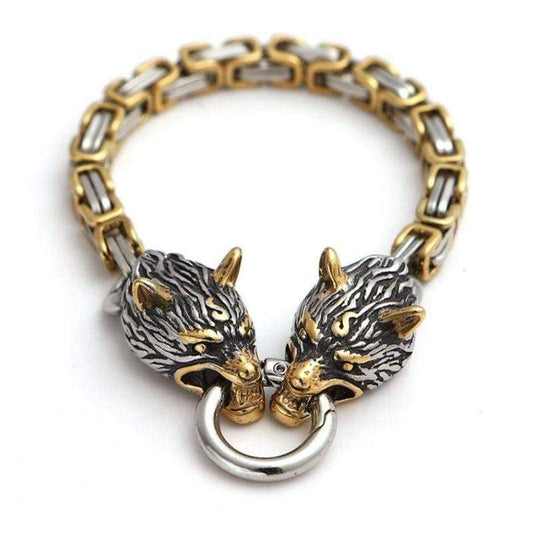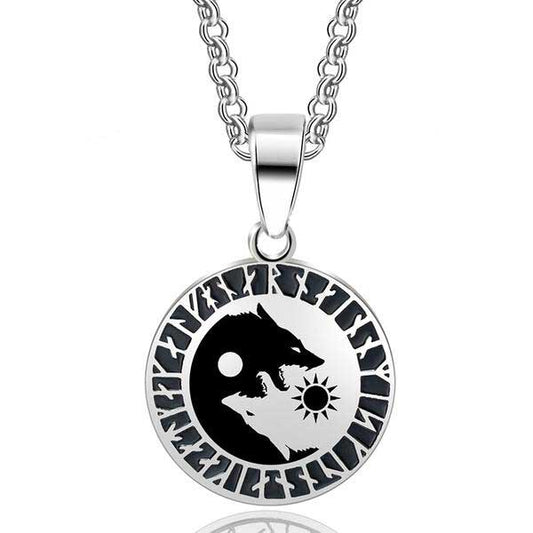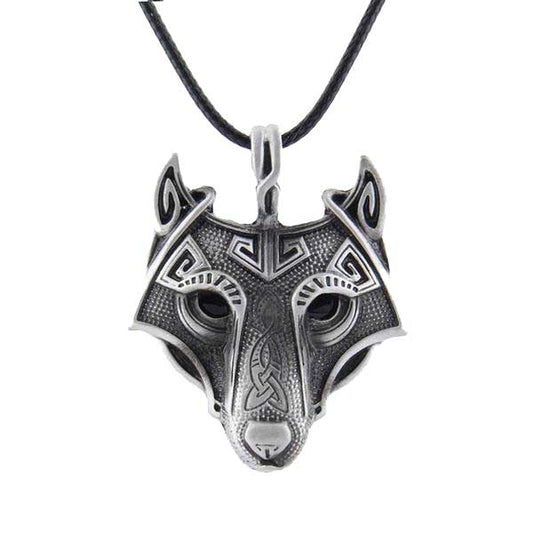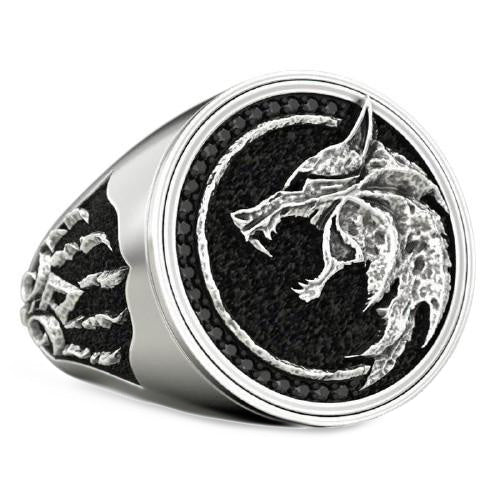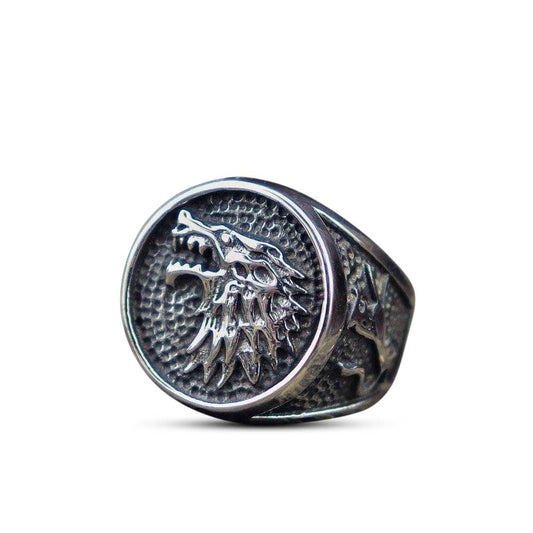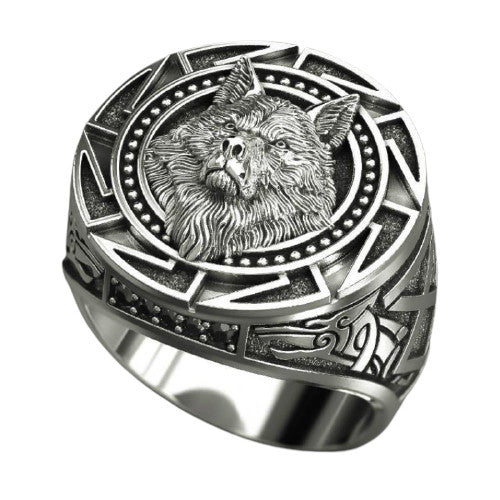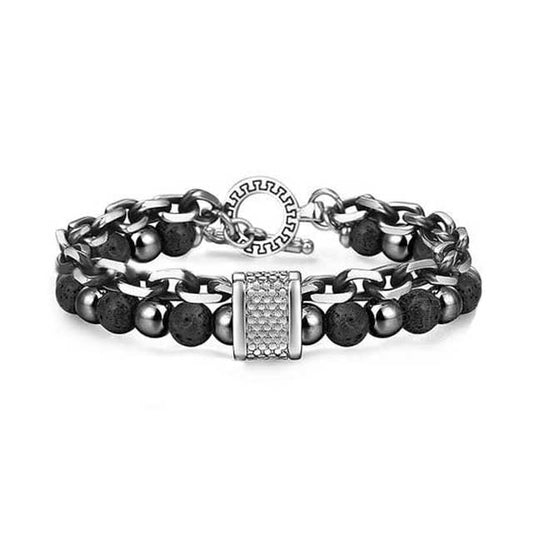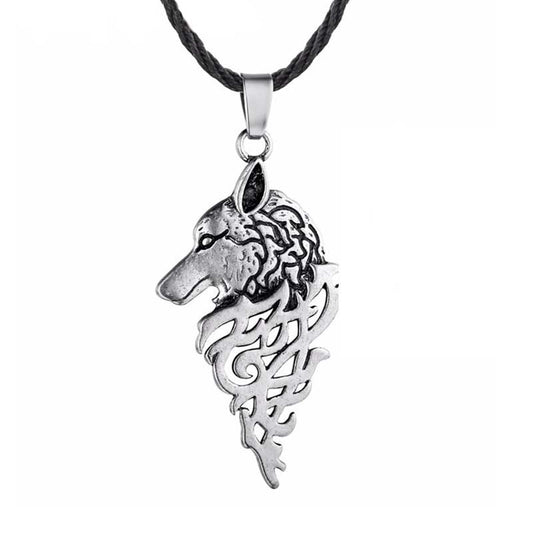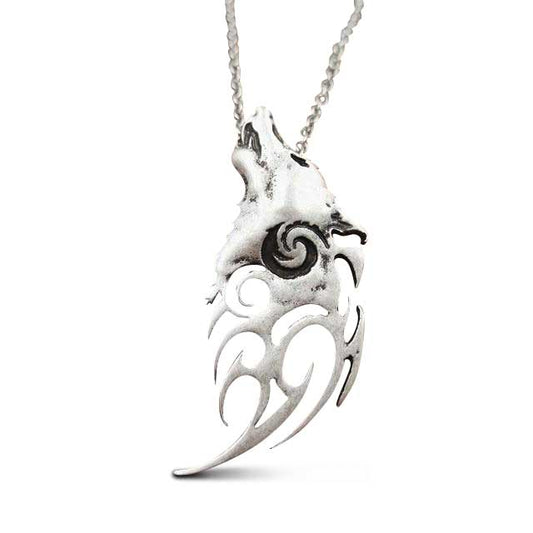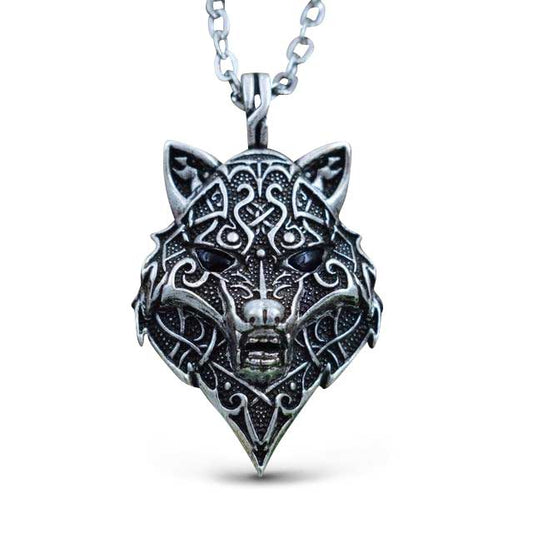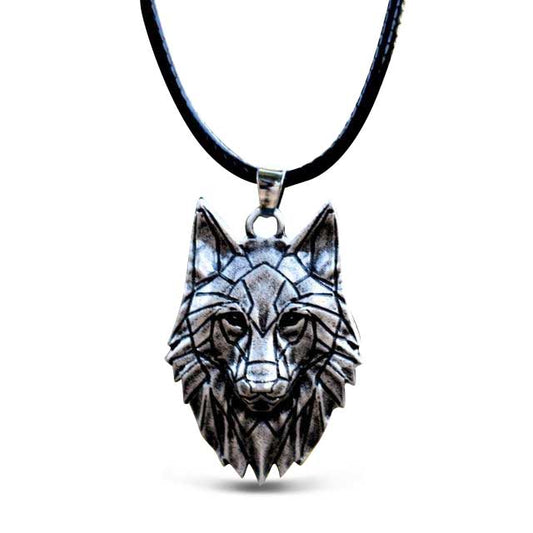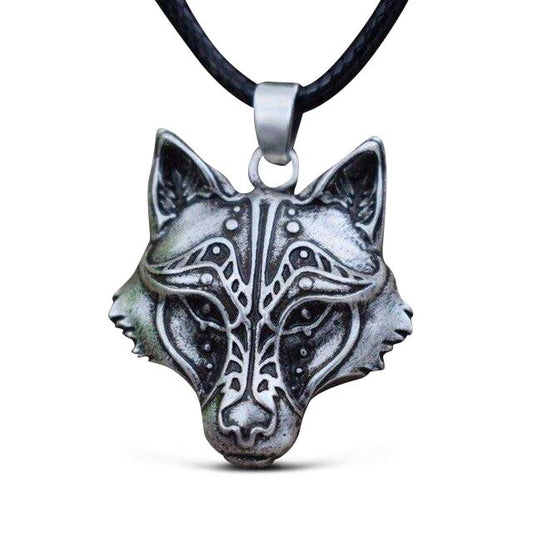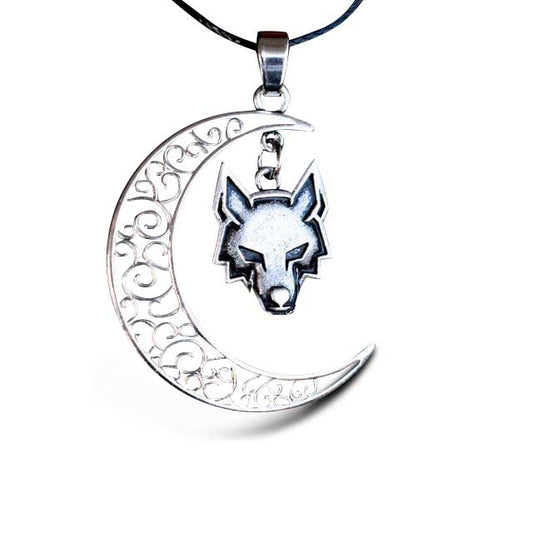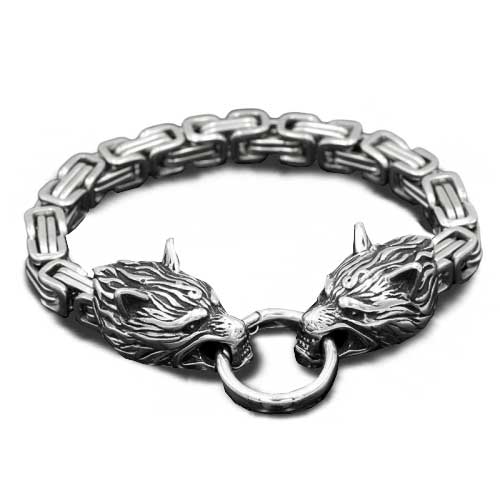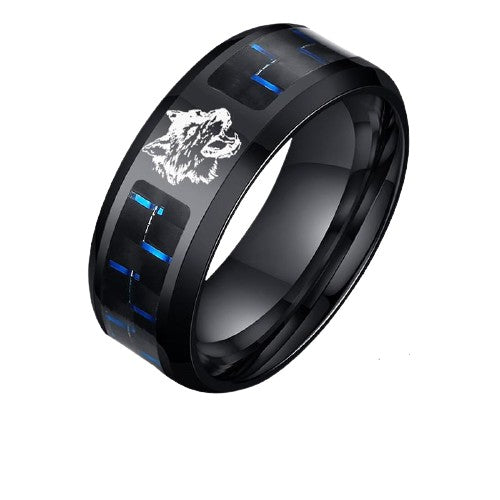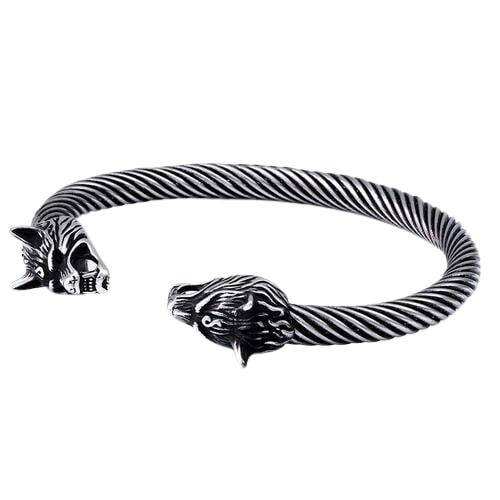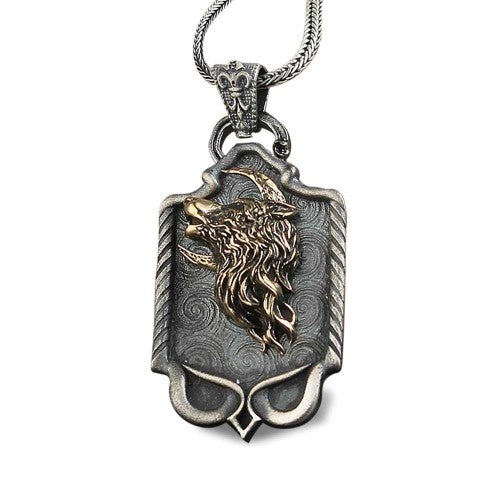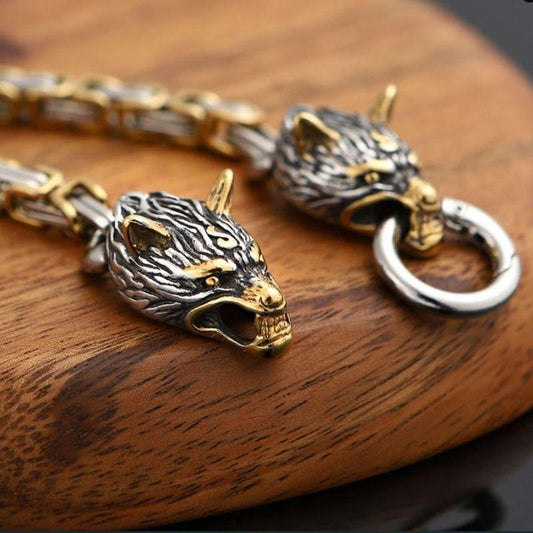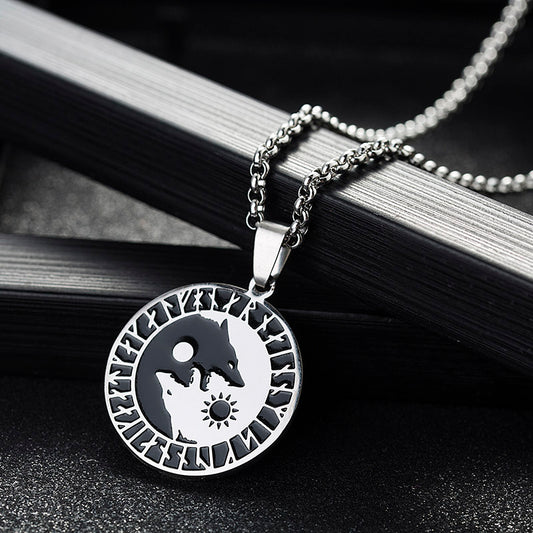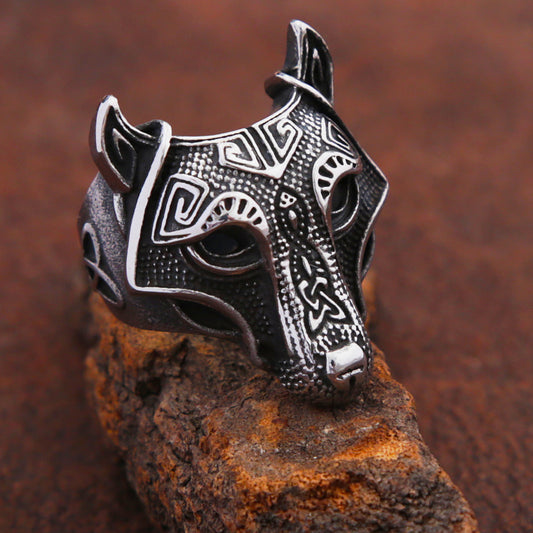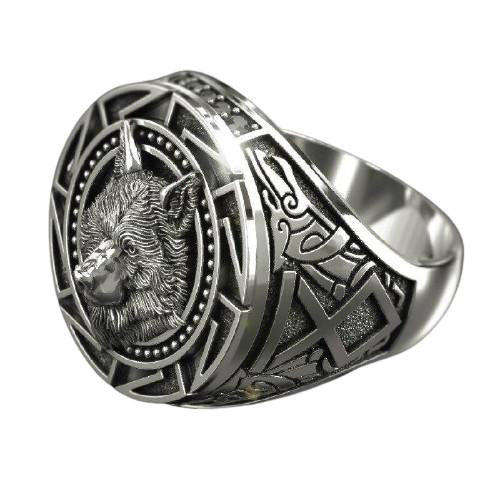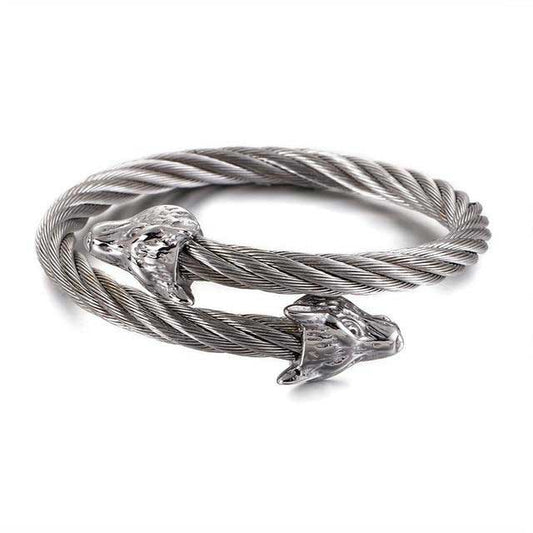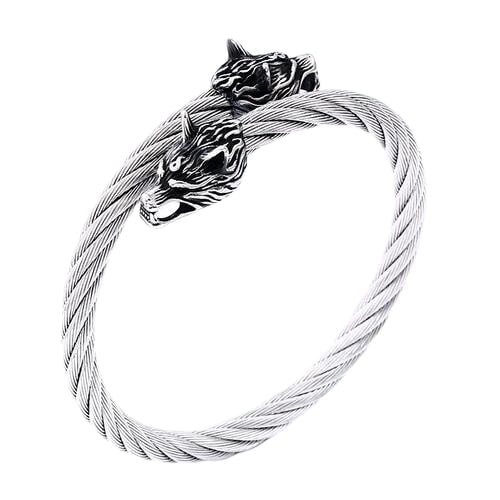Viking jewelry: a mix of style and history
Are you a big fan of history and are you particularly fond of Nordic style? Aside from clothing, jewelry and accessories also have an important place in Viking style. If you want to have a total Nordic look, you need to add accessories to your outfits. In addition, wearing Viking jewelry, especially necklaces, will bring a much more than original touch to your everyday look. You will be able to assert your personality while highlighting your passion through jewelry, whether for the hair, for the beards, for the ears or for the neck. Here's everything you need to know about Viking jewelry.
The history of Viking jewelry
Since the success of the “Game of Thrones” and “Vikings” series, these charming Nordic people with strong characters have only been talked about! Yes, even if their civilization was born several centuries ago, this does not mean that the Viking style has no admirers. Indeed, when you hear about Vikings, an image of a tall guy with a full beard immediately comes to mind. But know that the Vikings are much more than that!
The importance of jewelry in Viking civilization
Indeed, it is a civilization strong in traditions and know-how. Jewelry has an important place in their community. Initially, Viking bracelets, necklaces, rings and other jewelry were made to serve as currency. This is mainly the reason why these were made of precious metals.
In the event that a piece of jewelry was too large or made from a fairly precious metal, it was broken into small pieces in order to facilitate a transaction. In other words, the Vikings used jewelry as currency much like we currently use money in modern times.
But you should know that not all Viking jewelry was made only of metal. People in Nordic countries also used precious stones and pearls to create ornaments that were as sumptuous as they were graceful. These were specially worn by Jarls and the royal family. However, this is a rare technique that was only found in certain cities. Generally, Viking jewelry is carved or cut with different designs.
Creations that require a passion for art
Various archaeological excavations demonstrate that Norse men were more than simple bandits. They are in fact very organized people who have a culture that is as rich as it is diverse. Indeed, when the Vikings were not busy sailing and pillaging towns and villages, they were engaged in art and creating jewelry. This is mainly the reason why the wood and metal industries were very developed during this era.
One of their passions was making decorative objects for the home and interior. The Vikings also loved creating jewelry like pendants, bracelets, rings, necklaces, brooches, etc. This is particularly demonstrated through the complexity of the jewelry designs that were used at this time. Jewelry designers paid particular attention to detail. This is mainly the reason why decorative objects and accessories were made with precision and attention to detail. And with the different designs and ruins used on the sculptures, the Vikings had no shortage of imagination. And currently, the elements found through the numerous archaeological excavations represent a great source of inspiration for jewelry makers.
Viking jewelry to express their social belonging
According to these same excavations, it has been proven that Viking men and women wore jewelry. They also attach a certain importance to these accessories, whether on a social or religious level. So, the Vikings wore jewelry for all occasions. Not only to show their social rank, these accessories were also used to enhance their aesthetic appearance and to look more attractive.
Yet another proof that demonstrates how much the Vikings loved jewelry: they used precious stones both for accessories and for their weapons. Various excavations have also made it possible to find shields, boats and weapons decorated with pieces of jewelry. The name “pirate money” is also given to jewelry that the Vikings used as currency for trade.
And given the value of these jewels since they are mainly made of precious stones, the Vikings buried them to protect them. Burying jewelry was also part of Viking beliefs. In this way, their wealth would follow them to Valhalla and they could finally enjoy it with dignity.
The entry of precious stones into the manufacture of Viking jewelry
From the 9th century, thanks to relations with the Islamic world, precious stones entered the world of the Vikings. Currently, more than 100,000 pieces of Arabic silver have been discovered in Scandinavia. These coins may have been used as payment in trade or as quid pro quo for peoples with whom the Vikings were in conflict.
The use of different metals to create jewelry is done according to each person's social class. For the lower class, jewelry was made from wood and animal bones. For the richest, silver and bronze were used. As for gold, it was only the immensely rich and powerful families who could afford it. This is why it is not easy to find gold Viking jewelry.
The three most important discoveries about Viking jewelry
There are three main discoveries when it comes to the history of Viking jewelry. First, there is the discovery of the golden ring in the Blackwater River. Around the 1980s, part of the Blackwater River in Ireland was drained in order to begin a dredging project. It was at this time that a curious man named Glenn Crawford took the opportunity to search for long-buried Viking treasure. It was there that he eventually found a treasure in the form of a ring, a priceless gold ring. Archaeologists believe this ring was made during the 9th century. Indeed, in 832, the Vikings attacked a town near the river. And this is why archaeologists believe that the ring fell into the hands of the Norse during this campaign.
A few years later, in 1989, in England in Cheshire, near Huxley, a very precious Viking jewel was discovered. These include Steve Reynoldson, a treasure hunter who was able to find several rings with his metal detector. These include silver arm rings that date from the 10th century. Featuring very sophisticated and carefully carved animal designs, these rings were flattened before being placed underground. It is believed that these jewels were intended to be remelted for reuse to make jewelry or to be used as currency.
It was only a little later, in 2011, that the third greatest discovery of the Viking civilization occurred. It also took place in England, but this time in Lancashire, near Silverdale. It is still at the origin of a curiosity that a great treasure was discovered in a warehouse of ancient objects dating back to 900 years AD. AD. Darren Webster with his metal detector scanned this place several times without finding anything. It was just as he was starting to give up that he checked his detector one last time. It was then with great relief that he finally found, in a corner of the area, something buried in the ground. The beep and the light of its detector were like a calming effect. And to his greatest joy as a treasure hunter, more than 200 coins and jewels were placed underground in a metal basket. In the box weighing just over 1 kg, the following jewelry was found:
10 arm rings,
2 finger rings,
14 silver ingots,
6 parts of Viking brooches,
1 braid of wire,
27 coins (Anglo-Saxon, Middle Eastern and Viking),
141 fragments of cut earrings and ingots.
Viking jewelry: sources of inspiration for today's designers
Several pieces of Viking jewelry are currently on display in museums around the world. The Oslo Museum of Cultural History presents one of the most important collections of this civilization. The jewelry exhibited there dates on average from 780 to 1050. Thus, you can see the following pieces:
The braided bracelet. This is an approximately 400g bracelet of pure beauty. Although Vikings may have worn and made different types of bracelets, these pieces were rarely made of gold. What's more, made of gold thread. And even though this bracelet was not practical to wear, it served to inspire many jewelry designers.
The red coralline pendant. The Vikings are known for drawing inspiration from several cultures to create their jewelry. This pendant is the best example. It turns out that the central part is made of red carnelian which dates from Roman times, around 200 years AD. The stone then belonged to Charlemagne who asked to engrave gold in the central part. It was around the year 900 that this pendant was stolen by the Vikings.
Men's Viking jewelry
Thanks to various archaeological excavations, it has been proven that Viking men also wore jewelry. They mainly wore rings on their arms and necks and later, rings on their wrists and fingers. This research has also shown that the Mjolnir pendant (Thor's hammer) was one of the most popular ornaments.
The use of Viking jewelry for men
In the Vikings series, on his 12th birthday, Jarl Haraldson gave Bjorn a bracelet. Among other things, it is a tradition to mark the transition to adulthood. This shows that jewelry has an important place in the life of a Viking man.
It symbolizes courage, bravery, power, strength, but also wealth. Indeed, the Vikings are a people who like to appear, well beyond the rough and strong appearance that is usually shown to us. Kings, for example, wear different rings, several bracelets and necklaces.
For men, jewelry is particularly present in the hair, in the beard and on the hands. If you want to sport this particular style, you have the opportunity to choose between different types of accessories that will go perfectly with your everyday outfits.
The necklaces
When it comes to necklaces, there are discreet models and others that are more flashy. It's up to you to decide what type of ornament you want to wear depending on each event. For an everyday look, for example, a fairly discreet Viking necklace model will match your style. This is especially the case if you like to dress in chic or trendy clothes. You will always have that little part of Viking with you.
You can choose a simple necklace with a pendant depicting a wolf head or wolf teeth. This will mark your personality while highlighting your style. In addition to being trendy, wearing a necklace allows you to assert your clothing style.
The Rings
When it comes to rings, these understated and understated accessories blend seamlessly into any outfit. In order to bring the Scandinavian touch that you admire so much to your look, wearing a Viking ring is one of the best ideas. Once again, the ring can be decorated with a wolf. This animal is an integral part of Viking traditions and there is even a deity represented by a wolf.
The bracelets
Aside from Viking necklaces and rings, the Nordic people also love bracelets. This is an undeniable asset when choosing a clothing style, because it allows you to add a personal touch to the whole. In most cases, Viking bracelets are not decorated with precious stones. The latter being mainly reserved for the rich and powerful.
Viking bracelets are mainly made of wrought iron and sculpted to honor the deities. They can also depict animal designs and symbols. The bracelet has an important place in the male Viking clothing style. It is also possible to find them with other materials such as leather or steel.
The earrings
Earrings are reserved for the fairer sex, you say? This is not the case in Viking traditions. Wearing earrings is a big part of a Viking man's personality. This is also the case for arm rings, brooches, beard and hair jewelry. These are not only there to embellish a hairstyle, they can also show a person's social rank. Indeed, we easily recognize a Jarl or a king thanks to his appearance. The fact is that rich people have servants who do their hair and dress them.
Look ideas for a Viking man
Know that dressing as a Viking for a man is very easy! Just wear a few accessories to complement your everyday look and you're ready to join the lineage of Valhalla's braves.
Here's an example of a simple style: wear a white T-shirt and slim pants with nice shoes. Is the Viking touch missing? You can wear an Algiz rune necklace or a Viking necklace from the Hammer of Thor the Rune to proudly display your belonging to this civilization.
Something less flashy and more classy for attending a wedding or ceremony? Opt for a Dragon Scales Viking bracelet. Its black color will allow you to wear it with any outfit, even with a tailored suit. Don't forget hand jewelry like the Viking Men's ring or the Viking Wolf of Odin ring if you want a more discreet accessory.
Viking jewelry for women
History also shows us that Viking women liked to wear jewelry thanks to research and archaeological excavations. They are especially interested in necklaces and brooches. These even have several uses. They are not only there to embellish an outfit, the brooches are also used to attach them. Moreover, the Vikings considered them as part of their clothing.
The place of women within the Viking community
And in Viking culture, because women were considered the same as men, they also participated in wars, battles and raids. They particularly reflect strength, courage and power. Moreover, we find a representation of these qualities through the jewelry they wore. This is also reflected in the different myths where goddesses are highlighted. Nordic mythology indeed shows the power of goddesses and their intelligence. They are indeed capable of confronting and even outwitting male gods in a fight. And to emphasize this fact, this is even my base of the Norse pantheon. The best known of the supernatural beings are none other than the Valkyries. They are an integral part of their mythology and have a special place in their beliefs.
The symbol of Viking jewelry for women
Like these powerful women, jewelry forged for Viking women is also synonymous with strength of heart and intelligence. This is why women are also attracted to the world of Viking warriors. And the Valkyries play a big role in this craze. In addition, the success of the various series which talk about the life of the Nordics on streaming platforms demonstrates the role of women in the Viking community. They also show the style and way of dressing of Viking women. Whether it's clothes, haircuts or, and above all, jewelry, all accessories and lifestyle are in the spotlight.
Jewelry worn by Viking women
Scandinavian women wore different jewelry in the Viking Age. These include bracelets, necklaces, rings and different types of rings. Without forgetting the brooch, an essential element for attaching clothes. These jewelry can come in all sizes and are mainly made of steel, tungsten or silver. There are also all colors.
The women's Viking jewelry that is currently on sale is inspired by the jewelry that the Vikings actually wore in their time. To complete your outfits, you can choose quite rustic or modern models, depending on your style and your look. And these accessories can be adapted to any outfit. To add a touch of originality to your look of the day, you can for example wear a women's Viking necklace or a bracelet. Accessories should be chosen according to your personality. Indeed, if you are a fan of discretion, it is entirely possible to wear a necklace with a pendant which will not be too showy.
The viking necklace for women
Whether it's a short or long Viking women's necklace, it always depends on the style you want to have. For the pendants, you can choose them according to the meaning of each of them. The one that is most widespread at the moment is the Yggdrasil tree of life. For a woman, this necklace can bring several benefits. Indeed, this tree represents prosperity. You should know that in Viking mythology, it is this tree that connects the nine worlds together. Generally, this necklace is worn with a short chain, but nothing stops you from making it into a necklace.
Viking makeup to enhance outfits
So, to add the final touch to your look, you can wear mysterious, sober or discreet makeup. The best is to highlight the eyes, because the Vikings place great importance on the gaze. A line of eyeliner and mascara to increase the volume of the lashes can be useful if you want to add depth to your eyes. This style of makeup allows you to have a captivating look full of mystery.
Some gift ideas for a Viking woman
Are you looking for an original gift for a woman who loves the world of Vikings? Why not opt for a piece of jewelry? Whether it's a protective amulet or an accessory that has important spiritual meaning, there are several choices you can make for a woman. Aside from necklaces, you can also opt for a bracelet, a ring or a brooch. For pendants you can choose between different types:
Thor's hammer, also known as Mjolnir,
The tree of Life,
The runes or Futhark,
The vegvisir.
Obviously, this is not an exhaustive list. If it's a gift, you can rely on the personality of the person you want to give it to. Different models of Viking jewelry are present on our site to satisfy you. For example, you can offer a Viking ring, bracelet or necklace on Mother's Day or for Valentine's Day. For the material used, it is up to you to judge based on your preferences and also your budget.
How Viking Women Wore Their Jewelry
Viking men and women had a very particular way of showing their rank and social status, especially for women. Indeed, to show the fact that they are married for example, Viking women wore pearl jewelry on their heads. They wore their hair up and wore hair jewelry. And even more impressive is the nature of the materials used. It actually determines the social rank of the person who wears it. For brides, during the ceremony, they also wear badges which also serve to differentiate social classes. In addition to hair jewelry, these women also wore earrings and wide belts. Moreover, the various archaeological excavations carried out on different sites in the northern countries today allow us to affirm that the ancient Vikings wore this type of regalia whether on a daily basis or for special occasions.
We can't say it enough, but jewelry had an important place in Viking culture. Not only did it represent a part of their wealth, but also a person's might, honor and power. We recognized them from afar and the Vikings respected each other for that. In addition to this symbol, the Vikings also wore jewelry to be closer to their deities and their gods. Moreover, this is the reason why some coins show a representation of the ancient gods. They wear them on their breastplates, their chest, but also as pendants on chains and other accessories.
For women, animal symbols are mainly present in jewelry. The designs can depict fish, swallows, owls, dragonflies and other animals. As for men, the most prized animals were the wolf and the bear. Other pieces that represent deities are also very anchored in Viking tradition and culture. The latter carry amulets and talismans fashioned in the image of Freya, Odin or even Loki. Each of these accessories was used for different reasons and for different occasions.
During the Viking Age, coins in addition to being used in commerce and trade also served as ornaments and everyday accessories. Moreover, different current coins have the same characteristics as Viking coins with regard to manufacturing and polishing methods.
Wood was also used in the creation of Viking jewelry for women. The latter were also fond of body jewelry. The Vikings used several shapes to illustrate jewelry and satisfy the demands of different social classes.
Several Viking women's jewels were found in archaeological excavations and to everyone's astonishment, they have survived time and wear for more than 150 years. This indeed allows us to demonstrate the ingenuity and creativity of the creators of Viking jewelry. Currently, these pieces are even used for religious ceremonies. This is the case, for example, of certain Catholic masses which use these Viking artifacts or inspired by Viking manufacturing methods during masses and the communion service. Other bracelets and pendants with religious symbols that the Vikings looted and recreated in their own way are also present in some cultures. Indeed, several countries use Viking pendants and bracelets as dream catchers or as talismans. Moreover, these accessories are used today to ward off evil spirits and to protect souls.
Viking women also paid particular attention to the material used to make jewelry. Currently, you can choose between Viking jewelry for women in gold, silver, steel, bronze or even leather. For everyday wear, it is better to favor accessible and affordable jewelry. It is best to wear gold accessories for special occasions if you want to stand out with your Viking style. And if you want jewelry with designs, it is best to opt for silver instead of gold.
Some Viking outfit tips
To enhance an everyday Viking outfit, you can wear a discreet bracelet or a necklace with a pendant. For a woman, a few touches of fantasy with different accessories can bring a Viking style to an outfit. You should know that Viking jewelry can be worn with any outfit. You are an undisputed fan of the series of the famous warrior Lagertha, but you wear a working girl style to go to work? Opt for a Viking ax leather bracelet to finalize your look. This allows you to carry a part of your Viking soul anywhere without showing off.
Are you more of a romantic at heart and love long dresses? The Lagertha bracelet will allow you to enhance your outfit with a subtle touch of blue. This color works great with any look. Don't forget the Yggdrasil Tree Viking necklace that you can wear as a necklace for your summer evenings.
It goes without saying that women loved wearing jewelry in Viking times. This allowed them to stand out while asserting their personality. They wore jewelry like we wear clothes and changed them according to the seasons and occasions.
Viking gold jewelry
Gold is an integral part of Viking life. Jewelry made from this metal is very rare since it only belonged to the rich and powerful. Furthermore, gold, in addition to showing a person's wealth and social rank symbolizes a deep connection with the afterlife and life after death.
Gold in Viking history
History shows that the Vikings came nearly 5 times to the shores of Bordeaux from 844 to 864. The damage they left, especially during a particular raid in 848, is part of the population's fears. They equated this fear with their ships and their name. Reason why the people fled as soon as they saw Viking ships in the distance.
Currently, the Swedes come to this region to find archaeological remains of Viking goldsmithing which toured Europe. Moreover, an exhibition called “Viking gold” was created in order to reconstruct the most interesting works of this era. A plexiglass display case is displayed there which brings together more than 250 gold coins, the star attraction of this exhibition. Some objects are also imported. Another proof of the various journeys of the Vikings in international waters. And the most impressive thing is that most of these objects are not the result of looting, but of a sale or transaction.
The Viking treasure also includes bronze, silver and various objects which have several origins due to the numerous households which constituted the Viking colonies. And this treasure represents objects buried during the 10th to 12th centuries. It is mainly in Gotland that these jewels are present in large quantities. These include one hundred thousand whole pieces and twenty thousand fragments. Sweden nevertheless created fifty thousand fragmented or whole coins, twenty thousand of which come from Arab countries.
The origin of Viking gold
So to speak, the Vikings' gold came from the Late Roman Empire. The money comes from Arab countries. You should know that this exhibition and the figures relating to it only concern Sweden. Indeed, it is completely natural since the various historical documents and works created come from the Stockholm Historical Museum.
The artisans were brilliant metallurgists and excellent goldsmiths. However, due to a lack of raw materials on their lands, the Vikings were forced to obtain gold in other ways. This is also the case for copper and silver. The only metal that was available locally and in reasonable quantities was iron. This is why Viking treasures were largely a sort of collection of different objects from all origins. This is also why some coins have been found ready to be melted, flattened or melted down.
The jewelry was hidden in plain sight most of the time. In addition to providing wealth in Valhalla, this practice also preserved jewelry so that it could be worn for special occasions. One of the most important finds, for example, is two spectacularly cut bracelets. These different artifacts show to what extent jewelry making held an important place in this civilization. And their excavation reveals a large amount of information about the lifestyle that the Vikings had. Putting art and creation at the very heart of Nordic traditions and way of life. The manufacturing techniques and import routes for Viking jewelry have also been traced through excavations. Moreover, it is through the latter that researchers were able to find eight hundred deposits of Viking treasures on different coasts around the world and several navigable places. These locations are mainly marked by stones and the Vikings can sometimes have difficulty finding them themselves.
Viking silver jewelry
Money also had an important place in Viking civilization. This material, like gold and copper, has long been used to create unique and original jewelry. Moreover, Viking jewelry is mainly made of silver. You can find silver bracelets, earrings, rings, anklets and even pendants. Necklaces are the most prized by warriors. Although in those days the hypoallergenic characteristics of silver were not really a priority, it has great importance currently for fans of Nordic culture.
Indeed, if you have sensitive skin, it is better to opt for silver jewelry if you do not want to have itching or irritation problems. In addition, this material is easy to wear every day. It is very resistant and turns out to be less expensive than gold.
Money in Viking History
For the small part of history, money has always had an important place in the daily life of the Vikings. Aside from the fact that pieces made with this material were used as currency, silver also constitutes a large part of the jewelry that the middle class could afford. The key pieces that were made in silver are mainly torques and fibulae.
The torque
One of the most important pieces is the silver torque. This is a Viking necklace worn by warriors, nobles, wizards and other influential people in society. They are generally engraved with plant and animal motifs, depending on the aspirations of the person wearing it. Some of these parts were made from a hollow, flexible and lightweight tube. These properties even allowed users to open and remove them from the neck easily.
Other torque models are made of thick, heavy, non-hollow silver. These pieces are heavy and do not allow regular daily wear. This is why these imposing accessories were reserved for ceremonies, rare occasions and rituals. In the Viking Museum in Roskilde in Denmark, for example, you can see a torc that weighs up to 3 kg. This is also why this accessory was not used during battles. This is completely natural since it would be very difficult to wage war with more than 3 kg of silver on your neck.
There is also another type of barter that Viking warriors received as recognition during battles and raids. This is offered to them in order to congratulate them on their courage and bravery. In this sense, these torques were also used as a gallon or a kind of medal.
The fibulae
As for fibulas, these are actually brooches that women mainly wear for many reasons. Men also do the same, but it is especially women who are interested in fibulae. Indeed, this accessory is mainly used to attach capes to the clothing worn by Viking men and women on a daily basis. Some of them also use it as a talisman to attract the good eye of the gods. For others, fibulas represent a symbol of belonging to a family. They inscribe the coats of arms of the ancestors in order to perpetuate the glory and fame of the latter.
The use of precious stones to adorn Viking silver jewelry
Some of these decorative pieces were adorned with semi-precious or precious stones, depending on what the Vikings found. The stones used also made it possible to distinguish the social rank of a family. Among them, amber was most often used to bring a more sophisticated touch to the accessory.
Silver was also very present in the making of jewelry. It is a popular metal in the manufacture of rings, brooches, ends of straps, holders for drinking horns, buckles, but above all, currency. The manufacturing methods used for silver and bronze jewelry are pretty much the same. Indeed, it was because of the similarity in the properties of these two metals. And the polishing methods used are almost the same as those used today with electric rotating brooms. Indeed, the excavations at Jorvik, a few years ago, revealed the presence of iron oxide paste on wax. They were discovered in fairly large pieces. You should know that this substance is not very different from the “jewellers red” that they use today to polish bronze and silver.
Another popular method also involves melting a black paste called “nielle” into the patterns of a piece of jewelry in order to accentuate the contrast between the different shapes. It is in fact silver sulphide which also brings more shine to a piece. Manufacturers used ear wax to polish the surface and bring out the contrast with the material used. Some iron objects were also adorned with silver in order to decorate them and bring a more modern touch. Other pieces of interior decoration were also wrapped in fine silver foil.
The importance of working with silver for the Vikings
Working with silver represents an entire art in the Viking civilization. The inlay is quite easy to do, but requires a certain delicacy. This requires making small points and lines in the iron using an instrument to inlay the part after forging and finishing. This method requires concentration since you have to use a very fine silver wire to achieve the smallest details. This wire is then stretched to the size that corresponds to the workpiece and placed on the previously incised lines. It is necessary to ensure that the thread does not break and that is the delicacy of this process. The whole is then skillfully beaten to hold in the best possible way and to remove air pockets. This practice also makes it possible to hold the wire in place thanks to the previously drawn shape of the slot and the action of the beating at the part. For this step, no other product is used to fix the two materials.
Gold and silver gilding
Aside from silver, other pieces are also highlighted by gilding. It is in fact the application of a wash of gold to the surface or part of the surface. The process also requires quite unique know-how. The jeweler proceeds by grinding pure gold with mercury to create an amalgam. This paste is then applied to the different parts that are to be browned. The whole thing is then heated in an oven to remove the rest of the mercury through a natural chemical reaction which transforms this material into a toxic vapor. For gold, the material is immediately applied to the surface of the stone to be embellished. It was also used to add value to other metals. This practice was mainly used to give the impression that the coins were actually made of gold. This also allowed jewelers of the time to give contrasts to unique pieces.
It is always through excavations carried out over the years that these techniques have been discovered. Indeed, archaeologists have been able to demonstrate the presence of mercury for fire gilding. This allowed them to determine the manufacturing processes for silver and gold jewelry.
Money used as currency
Silver was also present in bullion to facilitate exchanges. Moreover, this represents a large part of the raw material used to create jewelry. Travelers also used them as currency. They called them “hacksilver”. While low quality silver or scrap silver consisted of jewelry that no one wanted and other old silver items. Jewelers also considered damaged and old coins as well as coins from other countries to be scrap money.
Silver neck and arm rings
As you may have noticed, Vikings are particularly fond of silver neck and arm rings. These accessories were mainly made either using twisted silver wire or from a hammered strip taken from an ingot. The jewelers then come and draw the patterns and the different perforations using decorative iron punches. You should know that the money used on a daily basis by the Vikings does not really come from a production essentially dedicated to this use. In fact, they used several sections of arm and neck rings to carry out merchant transactions. The Vikings do not have a coin maker per se. This is in fact an invention that will come later. And a few years later, in fact, silver coins were essentially created by “moniers”, jewelers and goldsmiths specially accredited by the king in order to make coins.
In addition to the complexity of making silver money, the dyes used are regulated and changed almost every month to avoid the production of counterfeit money. The laws at that time were very rigid regarding the minting of money and any infraction was punishable by very heavy penalties.
Viking jewelry in steel
Steel is also one of the materials used to create jewelry in Viking times. Easy to model, steel constitutes different pieces of Viking treasures since it allows you to create pieces with sophisticated and complex shapes. And as this metal can be found in different colors such as green or red, the creators of Nordic times did not deprive themselves of it, in order to create original and interesting pieces. Some of them even have colors that are an indescribable result of the creation of the deities.
It must be said that Viking steel jewelry leaves no stone unturned. There are several, whether bracelets, necklaces or even rings. Current manufacturing methods allow jewelry designers to offer you works made in stainless steel. This material is very interesting if you want to have an object that lasts over time and does not rust easily. In addition, accessories made from this material are accessible to all budgets.
When it comes to necklaces, the shiny property of stainless steel allows you to add a special touch to jewelry. It's up to you to decide whether to wear a pendant or other accessories with your necklace. What you can be sure of is its longevity.
The different stainless steel jewelry
There are several types of stainless steel jewelry that you can find. You can opt for Viking rings, necklaces or even bracelets and pendants for men. As for the model and shape, it's up to you to choose according to your own style. Our collection of Viking jewelry allows you to find the piece that will add the missing touch to your outfit.
For a woman, opt for symbols of prosperity and courage such as the tree of life or the horns of Odin. As with men's jewelry, you can choose between necklaces, bracelets and rings. Pendants will allow you to add a personal touch to your jewelry.
Viking bronze jewelry
The Vikings also used bronze to make jewelry of all kinds. These can be necklaces, bracelets, but the most popular pieces remain the rings. All jewelry is handmade by jewelers who are passionate about their craft and they have always experimented with new techniques in order to create pieces that are as original as they are authentic.
This mainly allowed them to stand out from other clans. So every detail is carefully worked by hand. And this practice is still present in the manufacture of Viking bronze jewelry to this day. Indeed, the artisanal method makes it possible to create jewelry that faithfully reflects Nordic and Scandinavian culture.
And what's great about this material is that it goes with all styles of clothing. For example, you can wear bronze Viking jewelry with your everyday outfit or only wear it occasionally during big evenings or events. The Viking Bjorn bracelet is one of the most popular pieces for everyday use.
You can also wear a Viking necklace with a Viking pendant of Thor's hammer to show your personality like the thunder god. For hair, different elastics with bronze pendants are also available in our collection to perfect your hairstyles.
Beard jewelry
Do you have a beard as full as the bravest Viking warriors? Know that there are beard jewelry that allows you to highlight it. These are beard beads that you can wear to show off a total Viking style.
Whether braided or not, your beard deserves a few personal touches if you're a big fan of Nordic culture. Plus, it brings a manly look to your face. Once you have properly prepared your beard, you can then go through the stage of setting up the beads.
You can choose between different bead designs in our Viking beard jewelry collection. The patterns are offered to you so that you have several styles if you want to change them often.
You need a small elastic band for each bead so that it does not tear off and fall off. Typically this is provided in the kit once you order. Follow these few steps:
Take a section of your beard, not too thick and not too thin either. It's up to you to see if the wick fits into the slot in the bead.
Bend the strand and insert it into the elastic and then slide the bead to make it easier to put in place.
Once the wick has entered the bead, take the small plastic tip in the form of a small ring to close the bead.
Insert the small ring on the elastic, in the same way as you did with your strand and leave space to insert the hair a second time.
Close the wick with the ring and the elastic. The presence of this small accessory allows you to easily remove it when the time comes.
This is a simple process, but it takes time. It is best to get help from a loved one if you have difficulty getting the wick into the bead.
Hair jewelry
The Vikings also liked to wear hair jewelry to show off their hair. Just like the beard, there are beads that you can put on the hair by separating the strands. For men, it is an art to wear Viking hair beads.
Hairpins are particularly the most popular items and they come in all materials. Whether silver, steel or gold, you can easily tie your hair with these accessories. Are you invited to an important ceremony? A wedding or a birthday for example? You can tie your hair in Scandinavian fashion with a Gold Viking hair barrette. The finish used to gild this hair accessory will allow you to stand out through your hairstyle while having your own personality.
Viking artisanal jewelry (handmade)
For the creation of Viking jewelry, metals were not only the materials used. The people of Nordic countries have long incorporated wood and leather into the manufacture of their accessories. Additionally, the ease of access to these raw materials made it possible to create unique objects, even if they were used on a daily basis.
Viking jewelry making methods
When it comes to manufacturing methods, there are several styles. As the Viking civilization lasted for almost 500 years, trends changed several times and as noted above, the lure of new techniques is stronger than ever before when the Vikings were not busy plundering cities and conquer new territories.
Thus, jewelry creation techniques have also undergone various revolutions during these years.
The Oseberg style: this is a style that highlights fearsome animals like fire-breathing dragons. Even if the latter came from the imagination of the creators and from Viking myths, the delicacy brought to the finesse and details of the designs on the bracelets mainly made it possible to perpetuate the existence of these mythological creatures.
The Jelling style: this practice still remains in the creation of jewelry with animal motifs. But this time, instead of imaginary monsters, the creators are inspired by real animals. Jelling style jewelry includes those that feature designs of animals like wild boars, crows, wolves, bears, deer, etc. Style is emphasized in the creation of jewelry with this technique since the designs are not everything. In most cases, animal images are surrounded by geometric shapes to provide depth or to highlight attention to detail.
The Borre style: this jewelry creation technique is still used until now to make geometric figures with knots and braids. Artisans mainly use this process to make leather Viking jewelry. Indeed, this brings a contemporary dimension to the accessory, while respecting the ancestral manufacturing techniques left by the ancient Vikings.
The meaning of Viking jewelry
Depending on the material used to make the jewelry or the designs it reflects, a Viking accessory can have several meanings. Gold and silver jewelry, for example, served as adornment for the rich and powerful. To highlight their bravery and strength, warriors wore jewelry with animal heads. The main role of jewelry was to indicate a person's social status within the community.
For others, it was about belief. As said above, for warriors, it is a sign of bravery that they wear animal heads. But it goes well beyond that. The most valiant, those who expect a place in Valhalla wear the jewelry to feel a special connection with the gods. You should know that the Vikings were very religious people. They carry great importance in their communion with their divinity. Warriors, for example, have different amulets which allow them to attract the protection of the gods during battles. Farmers use these to adorn their homes to improve land fertility and get more harvests.
Mjöllnir's hammer
Very present in Nordic mythology, the hammer of Mjöllnir is none other than the famous hammer of Thor. It symbolizes strength and will, because behind this hammer lies a deep meaning. Thor was considered the god of storm and thunder. Like these two disasters brewing, Thor could not contain his anger and it was really not best to provoke him or anger him. Thor's hammer is the weapon he never takes without during battle and he has the famous reputation of never missing his target.
In order to perpetuate this image and attract the favor of the thunder god, warriors proudly display their necklaces with a Mjöllnir hammer pendant to ensure that the good eye is with them. They also carried amulets and talismans in the form of hammers to protect them during battle. With the belief that Thor was on their side, warriors could fight to the death to show their bravery.
The Viking ax
If there is one tool that the Vikings never part with, it is the axe. And this is indeed the case in the Vikings series, no matter the size and reach of the opponents' swords, the Vikings always fought with an axe. The handling of this weapon also results in great finesse and quite spectacular movement control. And the ax was also used for whatever task the Vikings performed. Since the northern countries were quite cold, it took strength to cut down the trunks to make fire during the winter. The ax is also used to make houses, means of transportation and any object that requires cutting. It goes without saying that this tool had a great importance in the daily life of the Vikings.
The Fenrir Wolf
Straight out of Nordic mythologies, the wolf Fenrir represents an animal with quite controversial origins. He sometimes plays the role of the hero and sometimes the role of the villain. This, depending on the stories that were told to the children. This illustration symbolizes, among other things, strength and power, which is why it is present on several ancient Viking artifacts. Later, the wolf Fenrir was adopted in the creation of jewelry to show the courage and bravery of the person wearing the accessories. This image was even the subject of several inspirations to create the coats of arms of certain Viking families.
The Futhark Runes
Among other things, it is a very strong symbol which represents the cycle of life and the destiny of living beings in the universe. Understanding the runes allowed the person to understand the secret of the universe and the laws of the cosmos at the same time. The Futhark runes have their origins in ancient times.
